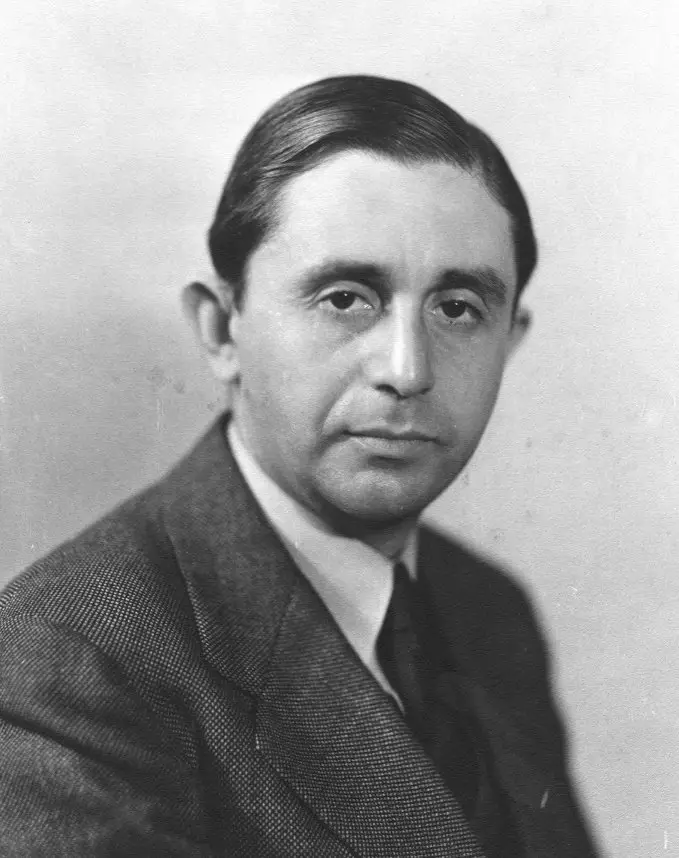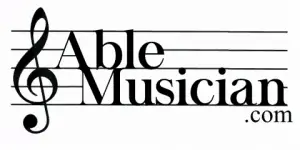
Joseph Schillinger was truly the Renaissance Man . . . a mathematician and pianist of the first rank who established music as a natural science.
Schillinger was a true genius whose intellect germinated a magnificent system to explain how music works, what it is and how to make it. And make it they did!
George Gershwin and Glenn Miller were two of the many fortunate ones who personally studied with him.
Using patterns given to them by Schillinger, these artists gained fresh new ideas for their particular style.
All exhibited their best work after studying with Schillinger.
What was this magic? What was it that brought out the classic beauty of Summertime or the jazz great Pennsylvania 6-5000?
Considering the results of his students’ work, clearly Schillinger’s methods are far superior to any others known.
Just who was Joseph Schillinger? What was this knowledge that Schillinger imparted? What was the spark of genius that made him unique? Let us take a brief look at his biography, then maybe we can understand.
Early Life
Schillinger’s credentials are so rich that it takes time to mentally digest them.
Born in Kharkov, Russia on September 1, 1895, Joseph Schillinger left no doubt in the minds of those who knew him that he was destined for greatness.
From the time he was five until he entered the University at St. Petersburg he studied design, music, mathematics and developed his theories by teaching himself the piano.
He always took time to help others and devoted his life to the study of music and art.
His formal academic years included intensive study of mathematics and physics under the best minds at the University.
This, along with drama, art, dance, history, language and electrical engineering, and four years of classical music studies and composition!
His knowledge of how music works on a natural scientific basis enabled him to understand other complex sciences such as math and physics as well.
He obviously held a unique and very special concept that permitted this enlightenment.
The early proof of this was after graduating from the University, Schillinger was appointed professor of music at the Kharkov Institute of Music.
In addition, he served as a member of various boards of education on a national scale.
His maturity overwhelmed his youth, as no person previously held such distinguished positions of esteem and importance at his age.
He was professor of the history of the arts at St. Petersburg and organized the first jazz band in Russia!
His contemporary and friend Dimitri Shostakovich compared Schillinger to Beethoven. Vladimir Horowitz agreed. He was very special indeed.
Schillinger in America
He came to America in 1928 and let us think a minute about what it was like then.
There was no TV, no stereo, no color photography, silent movies; just one half the population as today, and prohibition was the law of the land.
America was a rural, not urban society. Movies and radio unified the people . . . it was their media, it was their time.
But then as now human nature was the same and people wanted a better life, better things, continued improvements, as it is our nature to try to attain perfection.
They wanted their own music to express their world.
During this period, sound motion pictures were gradually replacing the silent film in theaters.
Schillinger helped solve the problems of the coordination of sound track with the film track, a formidable obstacle at that time. New music was essential for this new invention.
Background music had to be of certain rhythmic duration and freshly composed to fit the time, mood, excitement, etc., of the picture.
It certainly had to be pleasing to the audience. Schillinger taught correct set design for scenes and the method for finding the best angle for the camera.
Such knowledge was essential if this movie business were to be elevated to an art form.
Greats like Leith Stevens, Franklyn Marks and Carmine Coppola attest to Schillinger’s teachings.
Schillinger collaborated with Lev Termin (Leon Theremin), the great Russian inventor and physicist, and developed the first electronic music synthesizer which RCA manufactured.
During this time radio was in its halcyon days and Schillinger was the first to introduce his methods to this media.
High drama, exciting adventures, comical as well as sad programs benefited enormously from his tailor-made compositions that were fitting to the story.
Development of the Schillinger System
For several years Schillinger taught at Columbia University – music, fine arts, mathematics. He lectured and traveled widely and the list of people who studied with him is impressive indeed. What is more impressive is the result of the lessons.
For twenty-five years Schillinger devoted his time to developing a master text entitled The Mathematical Basis of the Arts.
In this master work he applies the same fundamental principles to spatial form as he does to tonal form with his first work.
All during the thirties Schillinger lectured, gave private lessons and conducted a very extensive correspondence course with many students.
Although many studied with him, few ever grasped his entire concept. Many awaited the publication of Schillinger’s master text.
This new work promised to reveal the secrets of writing music in the style of Mozart, Joplin, Gershwin.
It also would enable composer to construct entirely new forms of their own, of like magnificence.
The master text, The Schillinger System of Musical Composition, appeared posthumously.
Unfortunately no one had the opportunity to question Schillinger on a page-by-page basis . . . which certainly needed to be done.
However, the co-editors, Arnold Shaw and Lyle Dowling, did a splendid job, heroic, in fact, considering the circumstances.
Devotees and disciples of Schillinger and those who love music labored long and hard, piecing each pattern together and struggling with large globs of unfamiliar numbers.
The patterns Schillinger taught his students are especially important.
Those who have learned these patterns even without knowing about Joseph Schillinger have a much better command of the instrument, thus rapidly catapulting themselves into advanced structures.
And it is important to realize these patterns are universal in form and shape and in no way resemble the incoherent hodgepodge of an oscilloscope. In other words they are geometric!
As old attitudes changed so did our tools, music and mathematics.
Thanks to recent technology, seemingly undecipherable formulas and mysterious numbers in the pages of Schillinger suddenly were transformed into electrifying geometric coherence, in color and in third dimension.
Sophisticated computers now produce visual and accurate number maps through previously uncharted areas of music.
Visual color three dimensional geometric displays of notes, chords, scales, cadences and manifolds enable the student to grasp and learn music one thousand times faster.
Schillinger’s manifolds or mirror image patterns enable the facile and correct modal transposition that all composers and players desire.
His rhythm book enables us to find or generate any and all rhythms, past, present, even future!
Schillinger’s Legacy
Schillinger’s legacy is awesome. Since music is a natural science, it must follow the same fundamental laws as do other sciences.
This fact gives us a superior tool to reveal new secrets of science for the new millennium.
Schillinger is the first to give us a new concept of what time itself is.
Seeing is believing and when one sees what music looks like in geometric form, then the sting of practice is removed and one learns not only about music, how to play it, compose it, analyze it, but about art and science as well.
The Renaissance is here . . . now. When the fundamental parts of music are viewed as geometric components and are rationally and scientifically categorized, making music becomes very similar to assembling tinker toys.
With music we can construct and engineer any shape . . . Gothic cathedrals, roller coasters, molecules, abstract algebra. Architecture is frozen music. Music is fluent geometry.
As the talkies in 1928 heralded the coda of the silent film, a decade later dawned the realization that the movies were a true art form.
Television would wait in the wings for twenty years before it would attain like status and “they’ll never have color” was a statement forgotten.
The modern era sees amazing technology within the grasp of average people, enabling them to compose any or all of these art forms: TV, movies, art and music of any kind including symphonies. Schillinger saw and predicted this.
Synthesizers, video recorders, computers, as well as the piano itself, are the tools of the modern era which this generation can use to fashion their statement.
Schillinger’s awesome legacy is their key to the gates of the Majestic Garden.
